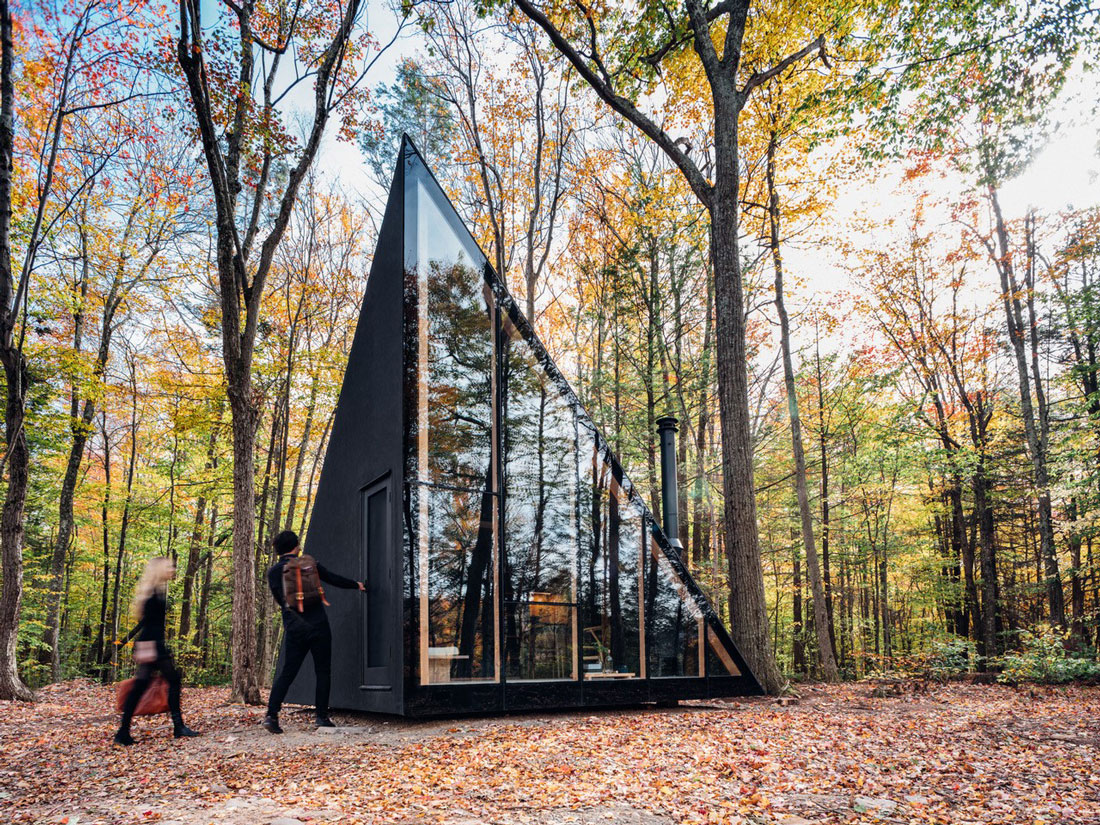Hammerfest, Norway
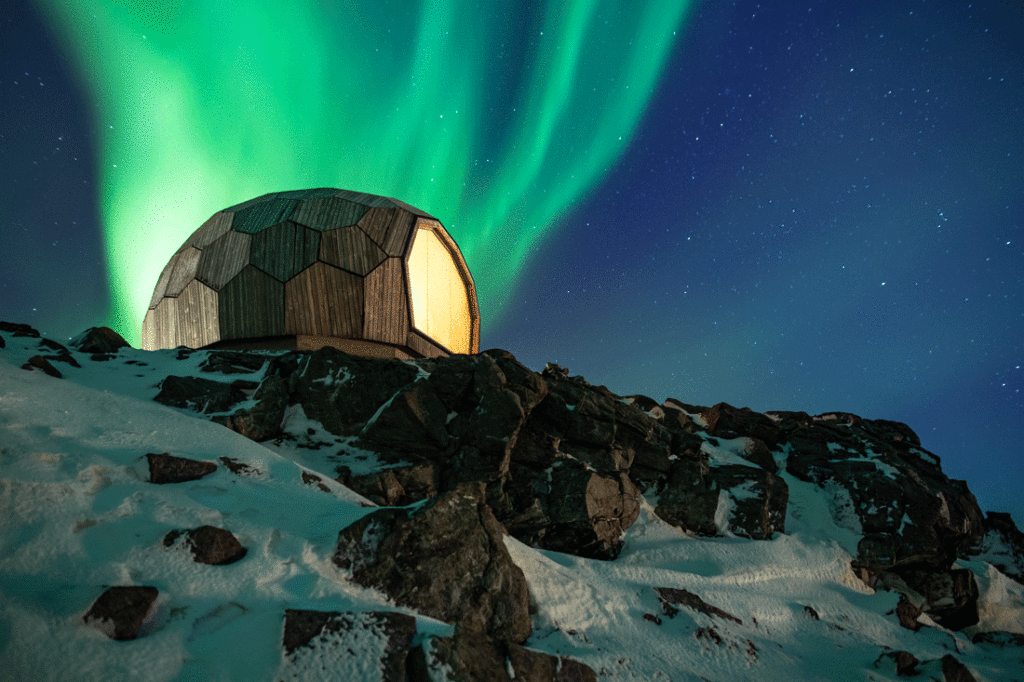
Norway is quickly becoming an architect’s playground for design and adventure. In 2002, the Norwegian government announced a $400-million initiative to transform the country’s spectacular landscape into a traveler’s ultimate designer road trip. You can discover more about it in our Guide to Norway’s Stunning Lookouts.
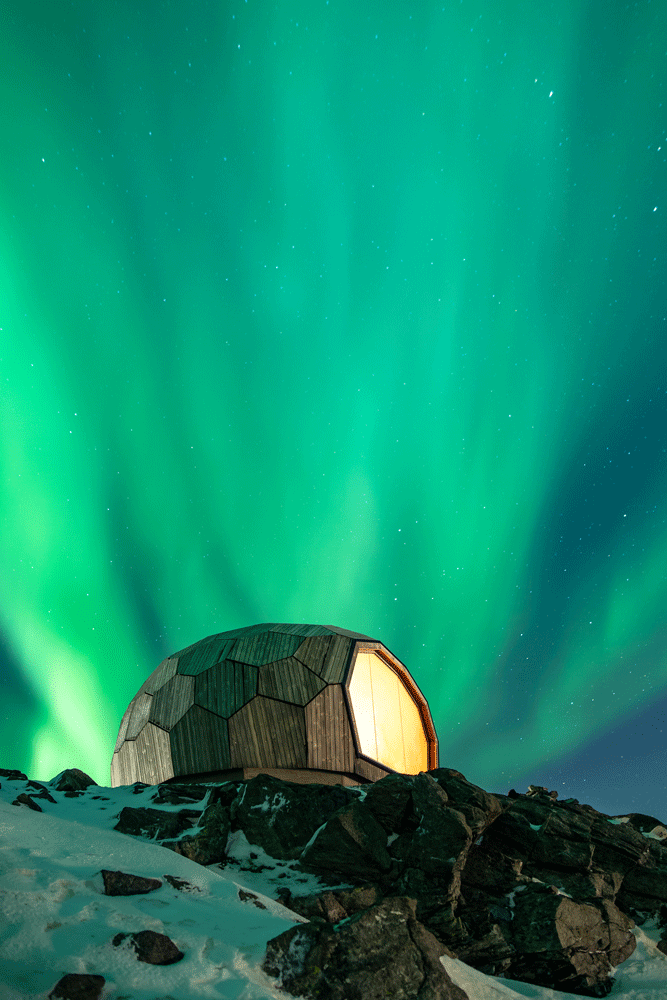
The following description is courtesy of SPINN.
SPINN Arkitekter (NO) and FORMAT Engineers (UK) have collaborated on the design and realization of a stunning new mountain hiking cabin above the arctic circle.
In the summer of 2015, the Hammerfest chapter of The Norwegian Trekking Association (DNT) decided to build two simple warming huts to promote hiking in the mountains around town. The brief was simple – “we imagine a small hiking cabin with good windows that has a wood burning stove and simple benches, placed near the top of the mountain and designed such that it suits the terrain”.
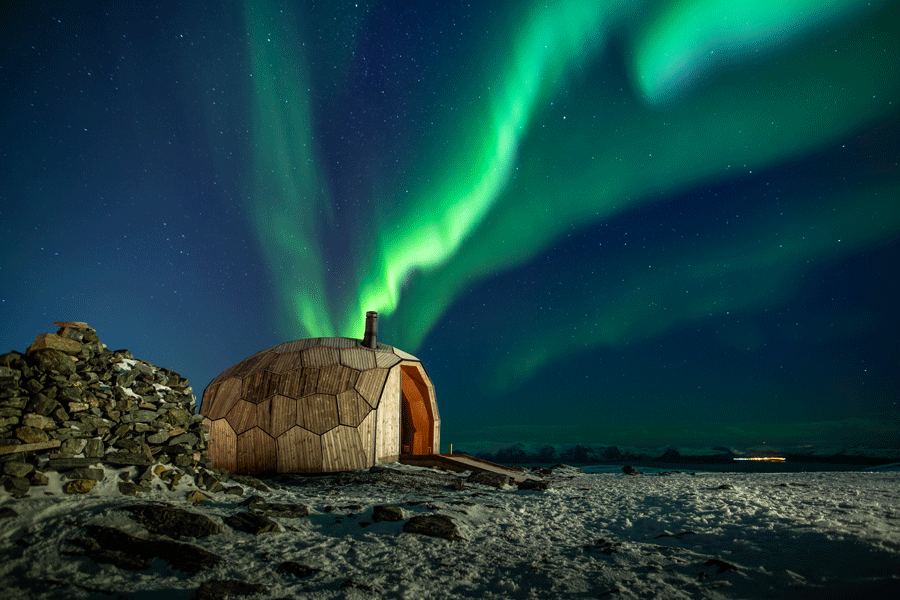
SPINN took up the challenge and produced a sketch design in the summer of 2015. “Varden” was conceived as an organic wooden structure that
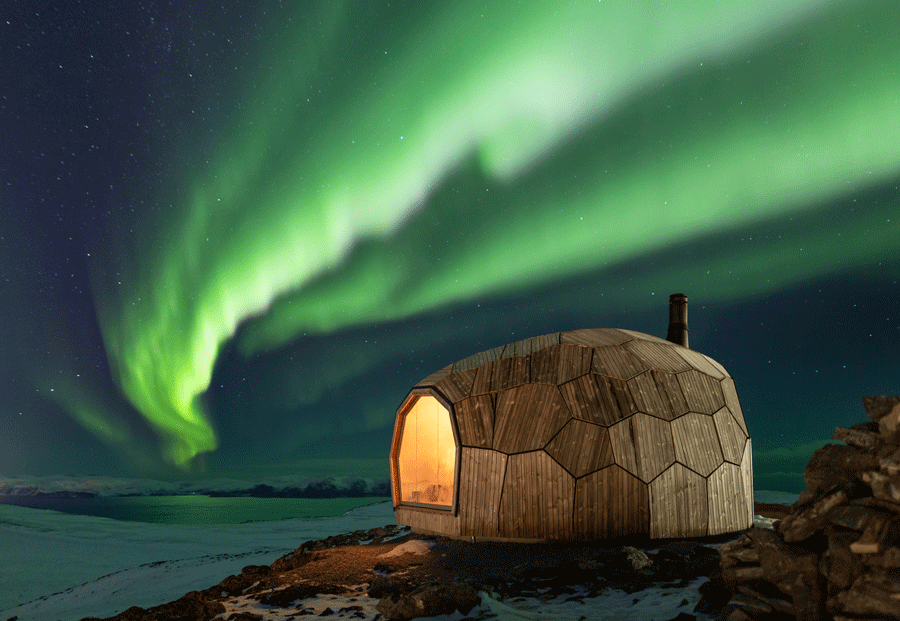
The sites were mapped in 3D using a drone and photogrammetry software to give a detailed map of the surface which was used as a baseline for form-finding. The initial shapes made by the architects in Sketchup and Rhino were further optimized and transformed by the engineers using Kangaroo and Grasshopper, together with some customized scripting tools developed by FORMAT. The result was a wooden cross-laminated timber shell with 77 unique panels that fit together like a 3D puzzle.
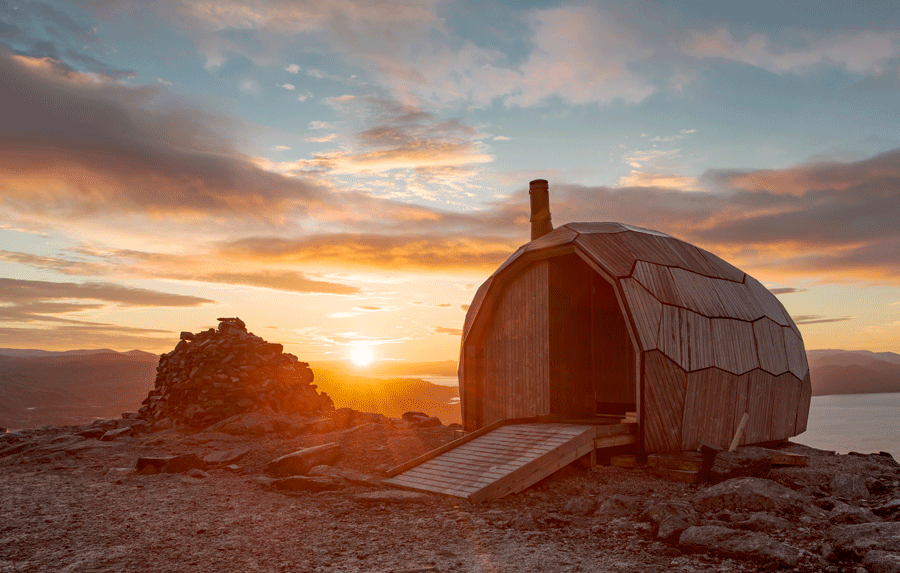
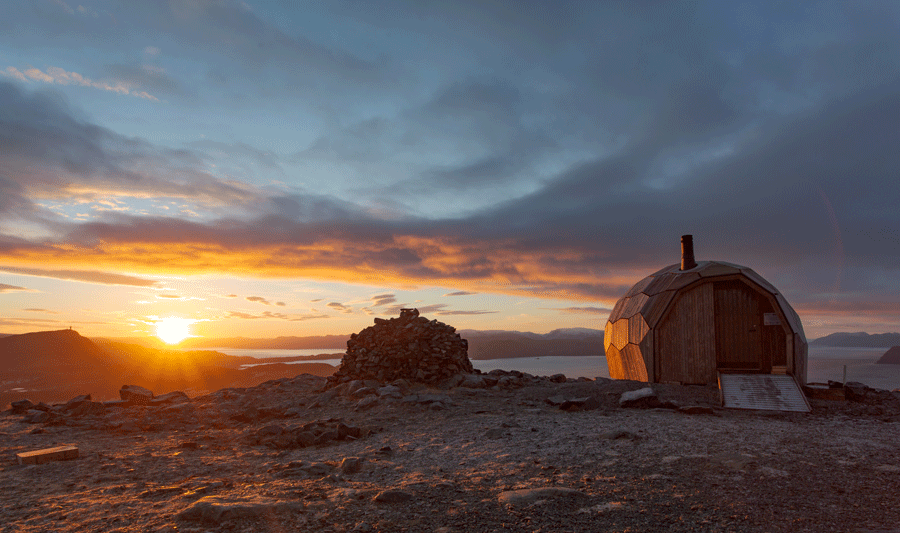
The design was tested against simulated wind conditions to make sure that it would withstand winter arctic storms and extreme wind conditions. Snow simulations were performed to ensure that the entrance will remain snow-free as intended. Structural forces between the panels were determined to specify the correct type of screws and fasteners for the construction. 3D printing was used extensively to test out how the construction would fit together, and to test cladding options for the exterior.
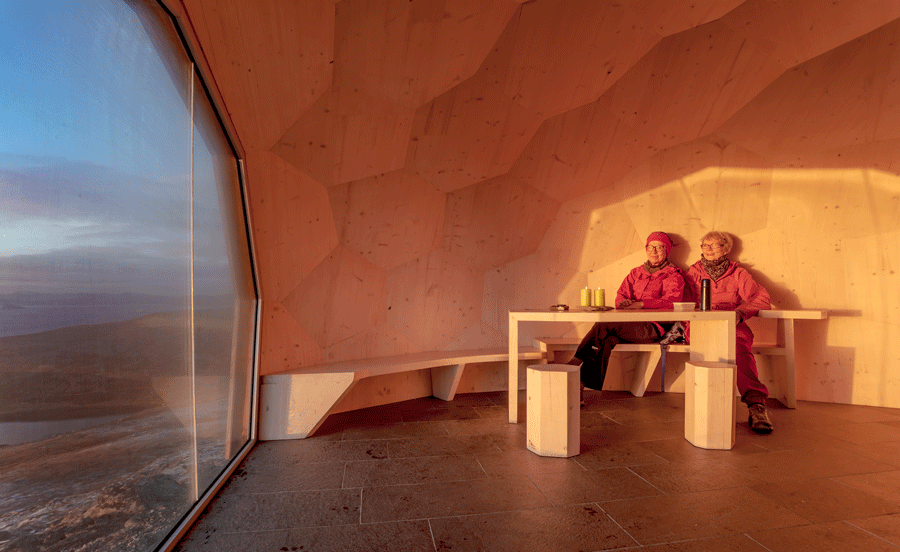
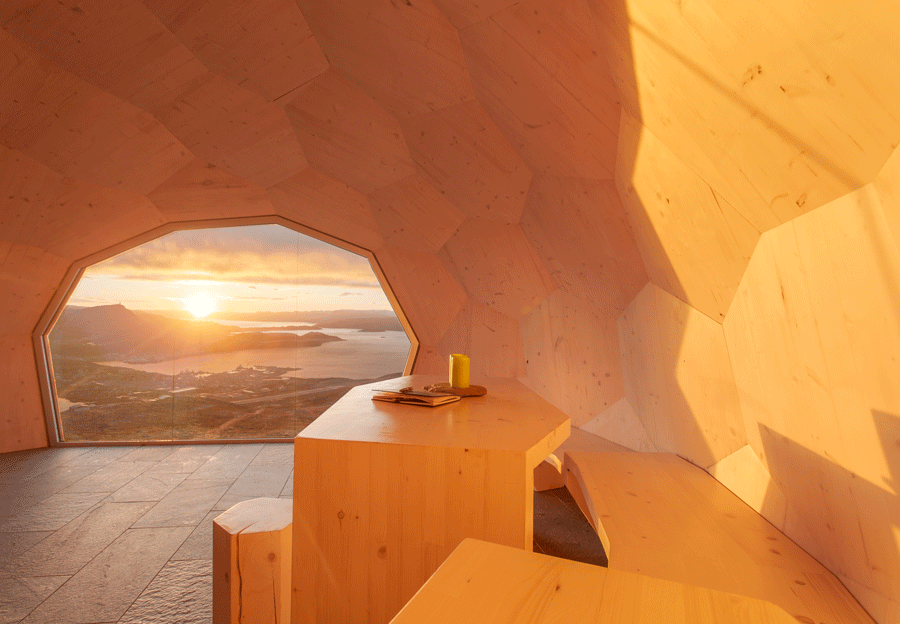
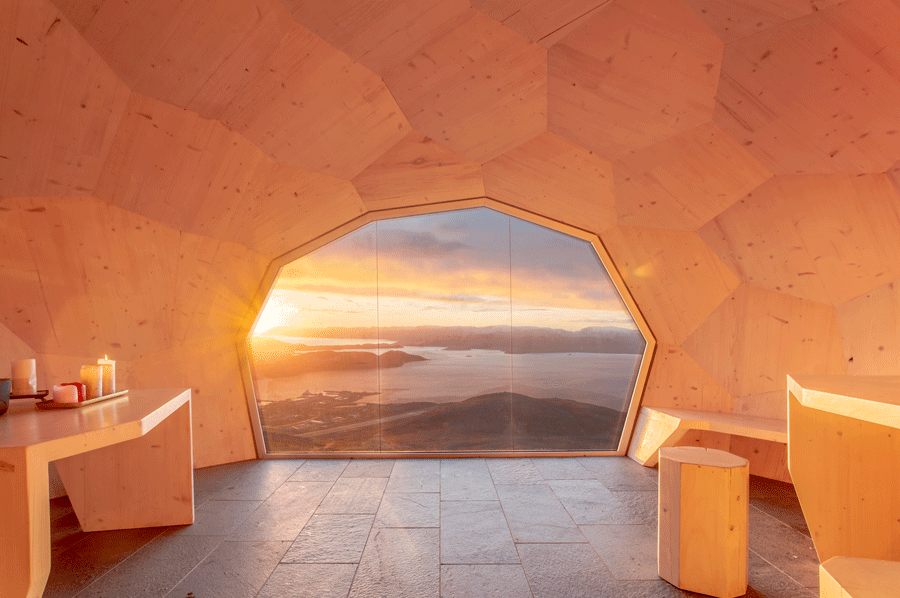
The design proposed by SPINN and FORMAT was something very different than the client expected and had a higher budget, but they were determined to find a way to get the project built.
money necessary to realize the project. Local businesses volunteered materials and services, and Kebony donated materials for the exterior cladding. According to the plan, the hiking association members would be responsible for raising the structure and transporting it to the site.
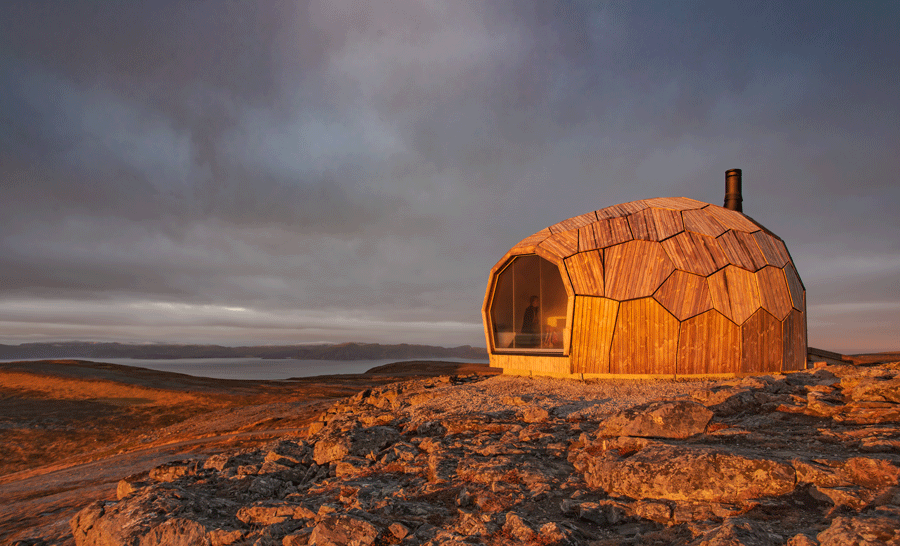
In the end, it was decided to build the structure in a controlled warehouse environment, where it would be put together and tested, then partially demounted for transport. One group of enthusiastic volunteers got the main structure of prefabricated CLT panels mounted together over a period of 4 workdays. Another group was responsible for cutting and measuring the frames and panels for the outer cladding based upon 1:1
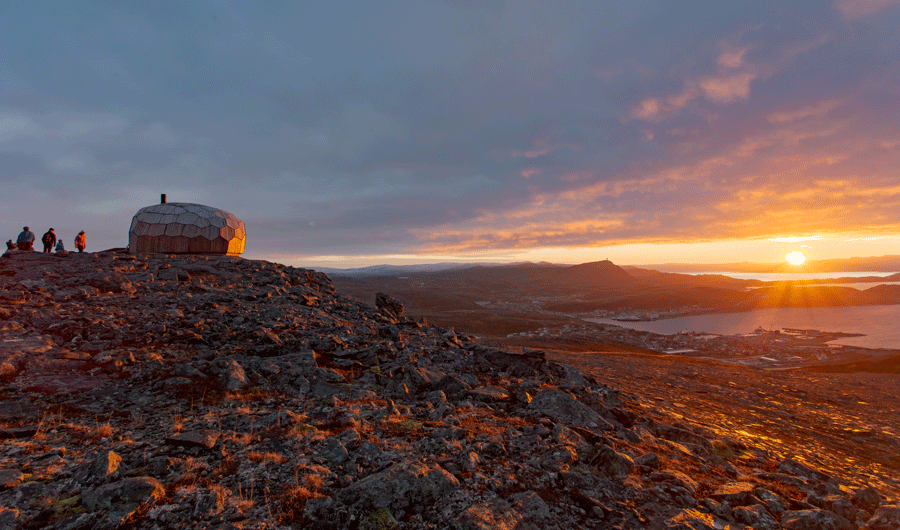
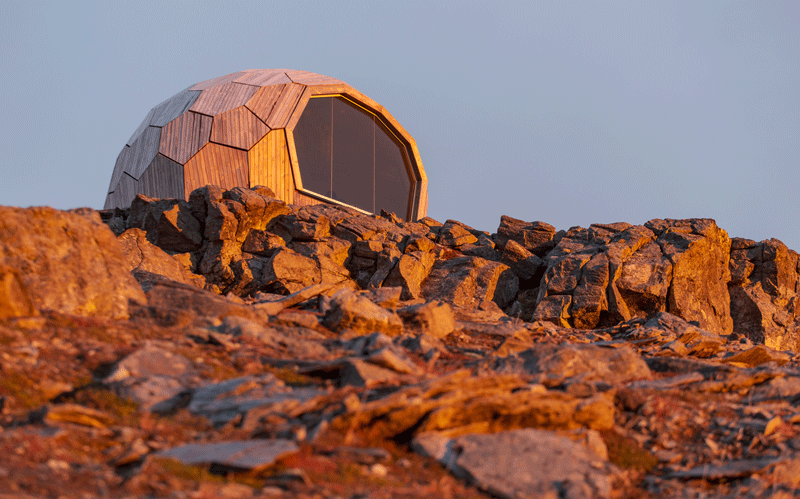
Thus far the first cabin has been a great
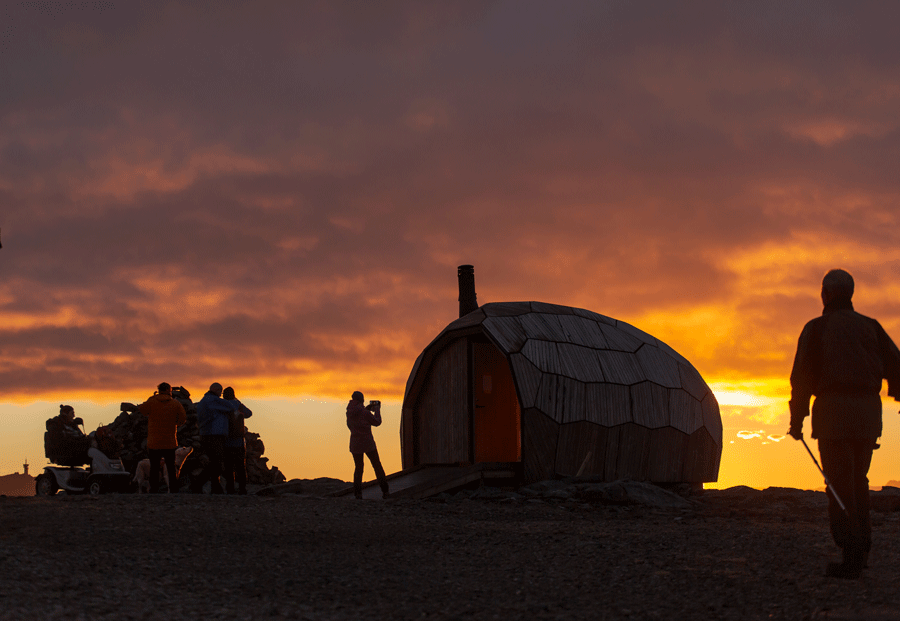
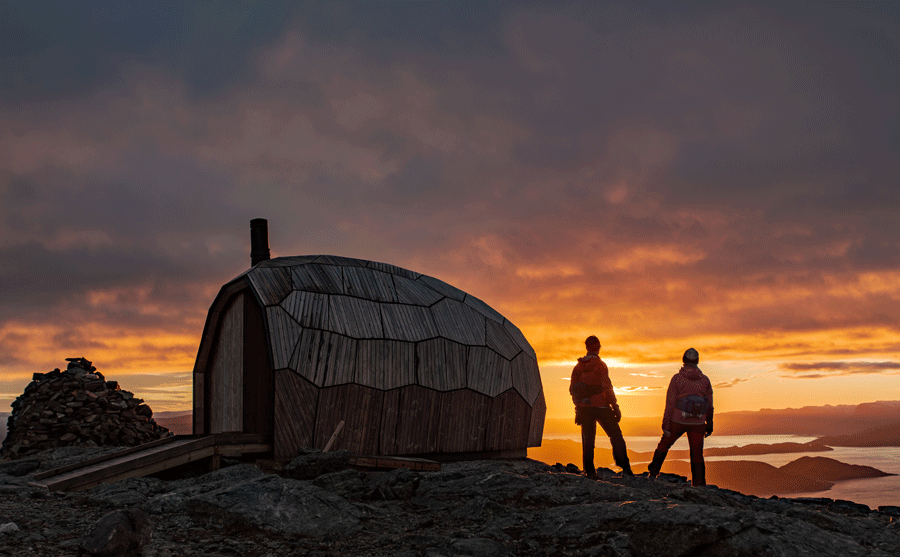
Project Facts
Client: Hammerfest
Place: Storfjellet and Tyven in Hammerfest, Norway
Time: Storfjellet completed 2018, Tyven to be built in 2019
Area: 15 m2
Budget: 100,000 EUR per cabin (included
Architects: SPINN Arkitekter, Oslo, Norway – www.spinnark.no
Structural Engineers: Format Engineers, Bath/London, UK – http://formatengineers.com/
More info: www.spinnark.no/miljoogomsorg/

